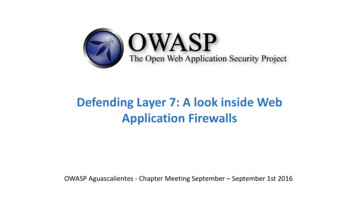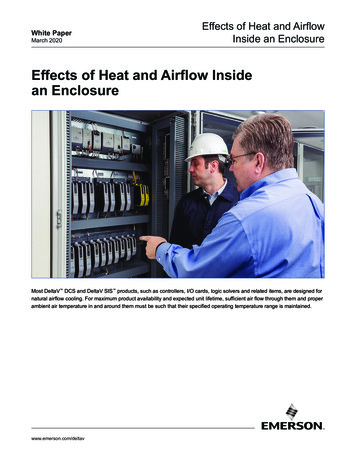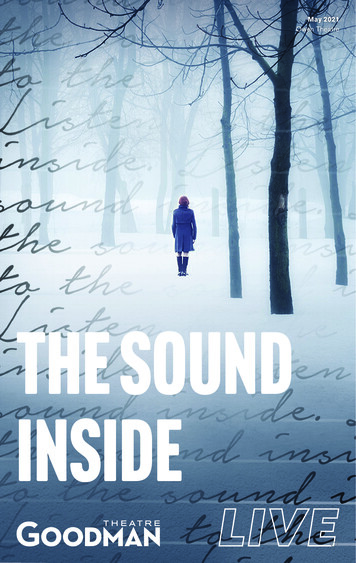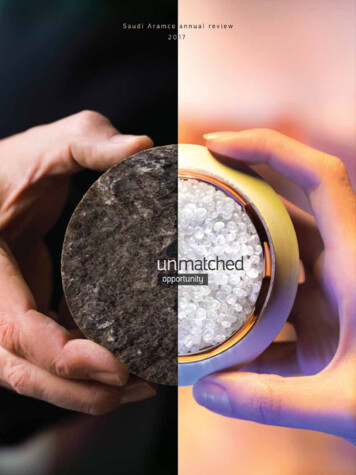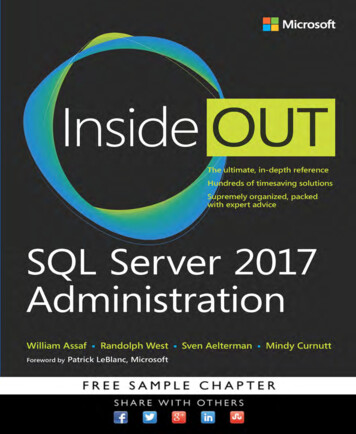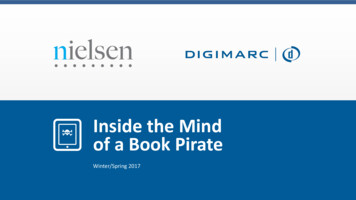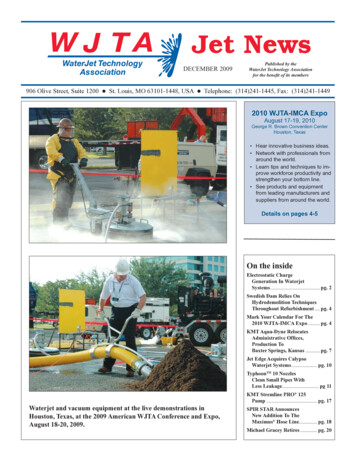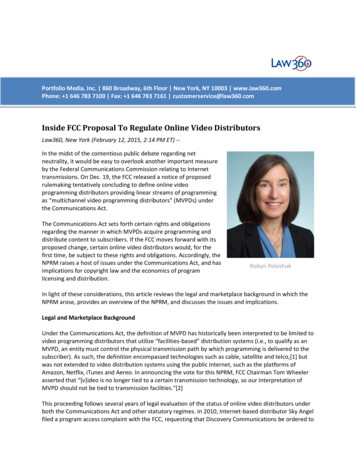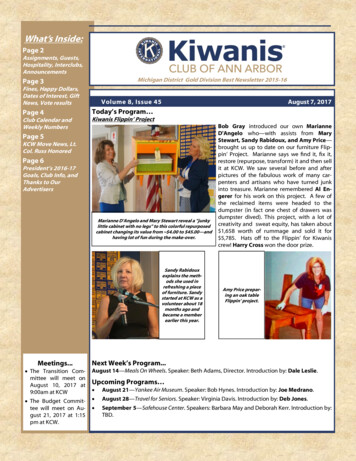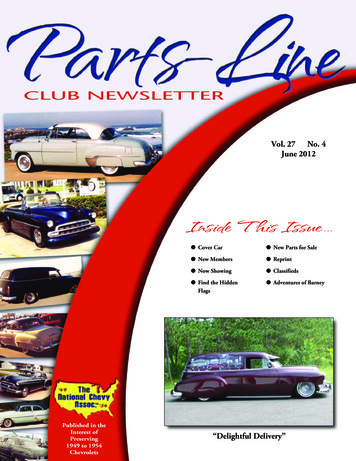
Transcription
INSIDE.nnnwww.maricopabar.orgDECEMBER 2013How a lunatic fringesaved Arizona - p. 3Volume 32, Number 12Photos from the 2013Pro Bono Golf Classic - p. 7Hall of Fame Luncheonand Annual Meetingrecap - p. 10Where The Legal Community ConnectsNewly electedmembers to theMCBA Boardof DirectorsannouncedMemberHolidaySocialPRSRT STDU.S. PostagePAIDPhoenix, AZPermit No. 4786Join us for a casual and complimentaryHoliday Social on Thursday, Dec. 12,from 5:30-7:30 p.m. at the MCBAOffice. You’ll enjoy appetizers, spirits,soda and a chance to win door prizes tomake your holidaymerrier (must bepresent to win).All members arewelcome, andthere is no charge,but RSVP towww.maricopabar.org/event/MCBAHolidayParty.Hon. Cecil B. Patterson, Hon. Monyette Nyquist, Hon. Michael Daly Hawkins and Hon. CynthiaCerta gather at the MCBA Annual Meeting and Hall of Fame Luncheon, which took place Oct. 30.For more photos and a recap of the event, go to page 10.Four new members and one incumbenthave been elected to serve on the 2014MCBA Board of Directors. The newly elected members are (in alphabetical order): GailBarsky, Flynn Carey, Comr. Geoffrey Fish andMatthew Meaker. Incumbent Norma IzzoMilner was re-elected to serve on the boardfor an additional two-year term.Seven candidates ran for five open seatson the board of directors. MCBA memberslicensed to practice in Arizona and in goodstanding with the State Bar of Arizona wereeligible to vote in the election, which ran fromNov. 1-15, 2013.The 2013 immediate past president, DavidE. Funkhouser III of Quarles & Brady, willcontinue to serve on the board.The board of directors will hold its firstmeeting of the year on Thursday, January16, 2014. nCourtWatchDaniel P. SchaackCourt rejects attempt to change campaign-contribution limitsSometimes it just doesn’t pay to be a trialjudge. Consider what happened in ArizonaCitizen’s Clean Elections Commission v. Brain,No. 1 CA-SA 13-0239, (Ariz. App. Oct. 24,2013), where the court of appeals rejectedthe superior court’s order denying a preliminary injunction in a matter pitting thepeople against politicians.The legislature recently adopted a measureknown as HB 2593, a sweeping act dealingwith elections matters. Among its provisionsis one that greatly increases campaign-contribution limits for candidates for statewide andlegislative offices. The governor signed HB2593 into law in April.The new measure rankled some parties, including a coalition led by the Arizona CitizensClean Elections Commission. It challengedHB 293 in a special action in the ArizonaSupreme Court, arguing that its attempt tochange campaign-contribution limits ran afoulof the so-called Voter Protection Act or VPA:constitutional provisions that generally preclude the legislature from repealing or changing voter-approved laws.But the supreme court declined jurisdic-tion. So the commission filed suit againstSecretary of State Ken Bennett in superiorcourt. Exercising a statutory right, Speaker ofthe House of Representatives Andrew Tobinand President of the Senate Andy Biggs intervened as defendants.In 1988, the voters passed the Clean Elections Act, including A.R.S. § 16-941, whichestablished campaign-contribution limits inclean-elections cases. That section did not actually state the applicable numbers; instead, itreferred to A.R.S. § 16-905, a previously enacted voter-approved provision that had actualnumbers.Along with its complaint, the commissionmoved the court to preliminarily enjoin Secretary Bennett from enforcing the provisions ofHB 2593 that relate to the increased contribution limits. The briefing schedule on that motion pushed oral argument to Sept. 10 — meredays before HB 2593’s Sept. 13 effective date.Within a couple of days after the argument — doing yeoman’s work in the face of apressing deadline — the judge issued a sevenpage order denying the requested injunction.He ruled that the commission did not havea strong likelihood of success on the merits — one of the four criteria for preliminary injunctions. Tentatively agreeing withthe defendants’ argument, he concludedthat HB 2593 did not run afoul of the VPAbecause the contribution limits were ensconced in § 16-905, which does not itselfhave VPA protection (having been enactedbefore the VPA arose).And if § 16-941 — the Clean ElectionsAct provision — has VPA protection, he concluded, it does not extend that protection to §16-905 by merely adopting the latter section asthe formula for determining the contributionlimits in clean-elections campaigns. (He alsoopined that that § 16-941 probably does nothave VPA protection, based on an argumentthat none of the parties had raised.)The commission challenged the ruling witha special action in the court of appeals. Thatcourt vacated the order denying the preliminary injunction and ordered the superior courtto reconsider it. It criticized the superior courtfor not having complied with procedural rulesSee Court rejects attempt to change page 14
2 DECEMBER 2013MARICOPA LAWYERThe Official Publication of theMaricopa County Bar AssociationEDITORIAL BOARDAaron Nash, ChairClerk of the Superior Court’s OfficeJohn F. BarwellPolsinelli, PCEda BarolliSnell & Wilmer, LLPBrian E. CieniawskiBremer Whyte Brown & O’Meara, LLPMargaret Olek EslerPolsinelli, PCJenna GambleMaricopa County Attorney’s OfficeTamara HerreraClinical Professor of Law, ASU Sandra DayO’Connor College of LawAmber PershonLaw Clerk, Arizona Court of AppealsMeagan PollnowAsimou & AssociatesDaniel P. SchaackAssistant Attorney General, State of ArizonaRiley S. SnowLaw Office of Riley S. Snow, PLCStan WattsDohrer & Watts, PLCEx-Officio MembersKaren ArraDirector of Media RelationsSuperior Court of Maricopa CountyMCBA PresidentDavid E. Funkhouser IIIQuarles & Brady, LLPMCBA Executive DirectorAllen W. KimbroughBoard LiaisonComr. Keelan BodowMaricopa County Superior CourtEditorMindy HaskinsThe Maricopa Lawyer is published monthly onthe first of each month and mailed to membersof the Maricopa County Bar Association, 303E. Palm Lane, Phoenix, AZ 85004-1532. Pleasesend address changes to the MCBA at theabove address or to cquinonez@maricopabar.org or (602) 257-4200. The MCBA website isat www.maricopabar.org and pdf copies ofpast issues are available for viewing. Pleasesend editorial submissions to Mindy Haskins atmhaskins@maricopabar.org. The editorials andother views expressed in the Maricopa Lawyerare not necessarily those of the Association, itsofficers or its members. Advertising rates and information are also available from Karla Durazoat kdurazo@maricopabar.org or (602) 257-4200.GIVE US YOUR OPINIONThe Maricopa Lawyer welcomes letters to theeditors or opinion pieces for publication.Letters and opinion pieces should be typed andpreferably submitted electronically. Opinionpieces are limited to 1,500 words and letters to700 words, and the editors reserve the right toreject submissions or condense for clarity, styleand space considerations. Letters must be signedto verify authorship, but names will be withheldupon request. Authors of opinion pieces willhave their names published. Letters and opinionpieces should be mailed to: MCBA editor,Maricopa County Bar Association,303 E. Palm Lane, Phoenix, AZ 85005-1532.Phone: (602) 257-4200.Fax: (602) 257-0405.Email: mhaskins@maricopabar.org.It’s time to say goodbyeJust like one of my favorite songs by Andrea Bocelli, it is, sadly, time to say goodbye.Like everything good in life, this yearhas gone by way too fast. It seems like justyesterday I was taking the helm from mypredecessor, Jennifer Cranston, leading myfirst meeting and rolling right into the Funk-AThon (or, FAT, for those in the know).It truly has been a remarkable year, and Iam proud of the accomplishments we havemade here at the MCBA.The aforementioned Funk-A-Thon was aneffort to capture new members and recapturepast members. Through this effort, and theongoing hard work of our entire board ofdirectors, we were able to not only sustainmembership levels from last year, but weactually exceeded our membership numbersand revenue projections. Since membershipwas my biggest focus this past year, I couldnot have been happier. There is still a deliciousdinner coming to our most successful recruit-ers on the board — it is coming, I promise!After much due diligence and a hearty discussion amongst the board of directors, wewere also able to refinance the place we callhome —303 East Palm Lane. Through ourfriends at Johnson Bank, we were able to lockin historically low interest rates, yielding substantial monthly and annual savings for theMCBA. This was a tremendous success aftermany years of heightened financial scrutinyand difficult economic conditions relating tocommercial loans.We’ve also continued the revitalization ofsome of our previously dormant (or neardormant) sections, including the LitigationSection and the Bankruptcy Section. Like everything at the MCBA, it took members stepping up, rolling up their sleeves and getting towork to move the needle full bore across thegauge. Both our Litigation and Bankruptcysections are now quite viable, very successfuland adding to the already-impressive numberof leadership positions within the MCBA, advanced CLEs and, of course, more networking opportunities for our members.Before signing off, I have to acknowledgethe people who got me involved with theMCBA many years ago and inspired me tojoin the Executive Committee. They include:Kevin Quigley, Judge Glenn Davis, JenniferGreen and Jennifer Cranston. Being a part ofthis great organization has helped me to meetmany new friends and colleagues, and for thatI will always be grateful.Finally, I have to acknowledge my successor, Bill Kastin at Snell & Wilmer. Billand I have grown to become good friendsover the years and while our approaches maysometimes be different, I know the MCBAwill be in good hands over the next 365 days.I know Bill has many great ideas for growingthe MCBA even more, including substantialoutreach to our largest membership base, oursolo and small firm practitioners. Bill, best ofluck to you, my friend.As my time at the top comes to an end, itis time to say goodbye. But don’t worry; I willstill be on the Executive Committee as theImmediate Past President and look forwardto providing sage advice (obviously) to therest of the Executive Committee, maybea bit of “Monday Morning Quarterbacking” to young Bill and a few “well, if I wasstill President, this is what I would do ”conversations.In all seriousness, thank you for allowing methe honor to lead this great organization. nOPINIONInteractive mediation allow both parties tobecome fully involved in the processBy Jack LevineIn interactive mediation, the mediatorshould possess considerable experience in thesubject of the mediation and a willingness toinvolve the parties to the maximum extentpossible in the mediation process. This interactive approach is rapidly changing the waythat mediations are conducted, with greatlyincreased success rates and at great savings forthe parties.This interactive mediation involves thefollowing concept: Each side is encouraged tomeet together, face-to-face, in joint sessions,whenever possible, throughout the mediationprocess and to actively participate in the process. In interactive mediation, the individualparties, or their attorneys, actively participateby presenting the underlying facts and expected opinion testimony in support of theirside of the case, after which the attorneys foreach side present a five- to 10-minute finalargument, much like a final argument given incourt, highlighting the strengths of their caseand the perceived weaknesses that they see inthe other party’s case. Each side then has anopportunity to respond and rebut the otherside’s arguments until each side has had a fulland complete opportunity to hear and replyto the other party’s factual positions and legalarguments.By the time these initial joint sessions areconcluded, everyone’s cards are normally onthe table and, moreover, as a result of theseback-and-forth exchanges and the exposureof each side to the other side’s case, themediator becomes fully informed about all ofthe important issues and details of the case.As a result, in interactive mediation there is noneed for extensive pre-mediation memorandums accompanied by voluminous exhibits,which will substantially reduce the mediator’stime and fees.Once the parties become fully informedabout the strengths and weaknesses of eachother’s case, the negotiation phase of themediation process can begin. In interactivemediation, this process usually proceeds verysmoothly and is frequently completed in lessthan an hour, even in the more substantial andcomplicated cases.The methods and techniques of interactiveparticipation by the parties and their attorneyspermit each side to experience a preview ofwhat they will actually see and hear in thecourtroom if their case is not settled. Byutilizing joint sessions instead of private caucuses, the parties are given a unique opportunity to observe and assess the persuasivenessof the other side’s evidence and arguments,which will normally weigh heavily in theirevaluation of their case. Joint sessions alsoprovide the parties with a unique opportunityto size up their opponent in terms of theirpersonality, appearance and predicted manner of relating to a judge or jury, as well asevaluating the abilities and the effectiveness ofthe attorneys for each side. With these insightsgained through the interactive mediation process, the parties may not want to risk facingthe adverse attorney’s cross-examination orfinal arguments in the courtroom.By means of this approach, the odds ofsettlement are normally increased by as muchas 25 to 30 percent over other mediationmethods, and the time and cost of the mediation process can be reduced by as much as 50percent or more, compared to other methods,according to the Maricopa County CourtAdministrators Office.One of the principal reasons why theinteractive style has proven itself so successful is that, unlike most traditional methodsemployed, it permits the parties to becomefully involved in the mediation process, whichproduces greatly increased incentives to settletheir case. The approach used by many mediators of merely shuffling back and forth between the parties while doing little more thanconveying offers and counter offers, does littleto coax the parties out of their pre-conceivednotions of the value of their case.Although this interactive method greatlyincreases the chances for success of a mediation session, it also requires a mediator whohas extensive experience in the subject matterof the mediation. An experienced mediator, ifrequested, is frequently in a position to act asa legal resource and mentor to the parties onthe disputed issues in their case.Also, to be effective in guiding the settlement process, the mediator should be familiarwith recent judicial decisions and jury verdictsin the various kinds of cases that he or she ismediating. Furthermore, based on his or herexperience, the mediator may even be able topredict what rulings the parties can expect onthe legal and evidentiary issues that are almostcertain to arise if their case goes to trial. Insome instances, these additional insights oftenSee Interactive mediation page 14MARICOPA LAWYERDECEMBER 2013 3How the lunatic fringe saved ArizonaFor Archie Roosevelt, March 19, 1911,was notable for the rare opportunity to spendsome quality time with his parents and hissister, Ethel. Archie, then 16 years old, wasthe fourth child of Edith and Theodore,and for the past year had attended the EvansSchool for Boys at El Rancho Bonito, abouttwo-and-a-half miles southeast of downtownMesa. The school was a smaller Western version of the prestigious prep school, PhillipsAndover Academy. Each of the 20 or so students, including Archie, had his own cabin.Less than a week before, Archie had brokenhis father’s endurance record by riding 112miles in 20 hours, stopping only to water thehorses and change mounts.Wonders on a grand scaleArchie’s father, former President Theodore Roosevelt, preferred being addressed as“Colonel Roosevelt,” or just the “Colonel.”The Colonel and his entourage were visiting Arizona to participate in the dedicationof the world’s largest masonry dam and whatwas for a time the largest artificial reservoirin the world.Construction of the Theodore RooseveltDam, otherwise known as Salt River DamNo. 1, began in 1905. The dam was the firstmajor project completed under the Reclamation Act of 1902. Dramatically over budgetand behind schedule, the dam was still a powerful symbol. Along with construction of thePanama Canal, it proclaimed U.S. ascensionas a world power under Roosevelt. Similarly, the successful completion of the projectconfirmed the progressive concept that thefederal government could tackle the huge infrastructure projects believed to be needed totame the West for development.The Roosevelt Special arrived at the SantaFe train station in Phoenix at 9:20 a.m., afterleaving the Grand Canyon the night before.The party had spent 24 hours at the canyonrefreshing themselves and enjoying the vistasthe Colonel had first marveled at in 1903.When he first saw the canyon, then President Roosevelt addressed a group of territorial dignitaries in the context of a politicaleffort by mining companies and other developers to exploit the canyon for commercialbenefit. He told his audience:“In the Grand Canyon, Arizona has a natural wonder which is in kind absolutely unparalleledthroughout the rest of the world. I want to ask youto keep this great wonder of nature as it now is. Ihope you will not have a building of any kind, nota summer cottage, a hotel or anything else, to mar thewonderful grandeur, the sublimity, the great lonelinessand beauty of the canyon. Leave it as it is. You cannot improve on it. The ages have been at work on it,and man can only mar it.”After failing to convince Congress topass legislation protecting the Grand Canyon from developers, President Rooseveltexercised his executive power and createdthe Grand Canyon Wildlife Preserve in 1906.Two years later, he established Grand CanyonNational Monument.A dam fine dayAfter stepping out the door of his privaterailcar into the mild, spring Phoenix morning, “the first citizen of the world” offered aquick greeting and flash of his famous Rooseveltian teeth. The Colonel was immediatelywhisked away by local developer DwightHeard to the lead car of the 25-car officialmotorcade that would escort his party tothe dedication of the new dam. Heard’s carwould be second in the procession with Mrs.Roosevelt and Archie aboard. Ethel and hergood friend Cornelia Landon followed in theSugar Company car.The Colonel’s seven-passenger touringKissel Kar bounced across the railroad tracksat First Avenue, turned east on Jackson Streetand then north on Central Avenue. The caravan continued north on Central to the IndianSchool, where the Colonel gave a short, inspirational address from his car to the assembled students and teachers. Then it wason to Granite Reef to cross the Salt River andtackle the Apache Trail to the new dam. In all,the drive took about seven hours, including apicnic lunch break at Tortilla Flat and a fewother sightseeing stops.Around 5:45 p.m., after a handful ofspeeches, the Colonel ceremoniously presseda button and the future of Arizona was permanently changed. As the waters of Roosevelt Lake began to flow through the dam’sspillways, the Salt River Valley began to receive the single, most important resource thatwould fuel decades of agricultural and commercial development. In just 10 years afterthe dam was built, the population of Maricopa County tripled.Sharing the limelight with the Colonel before, during and after the dedication ceremonies were two Phoenix attorneys who playeda major role in bringing the state to thatmonumental day. Former Territorial Governor and Supreme Court Justice Joseph H.Kibbey was assigned to car No. 5, the Maricopa County car, and Territ
Dec 09, 2014 · Phoenix College Train to become a paralegal in a program that offers quality instruction with real world applications. ABA-Approved Day and evening courses Affordable tuition Fully accredited University transfer opti

